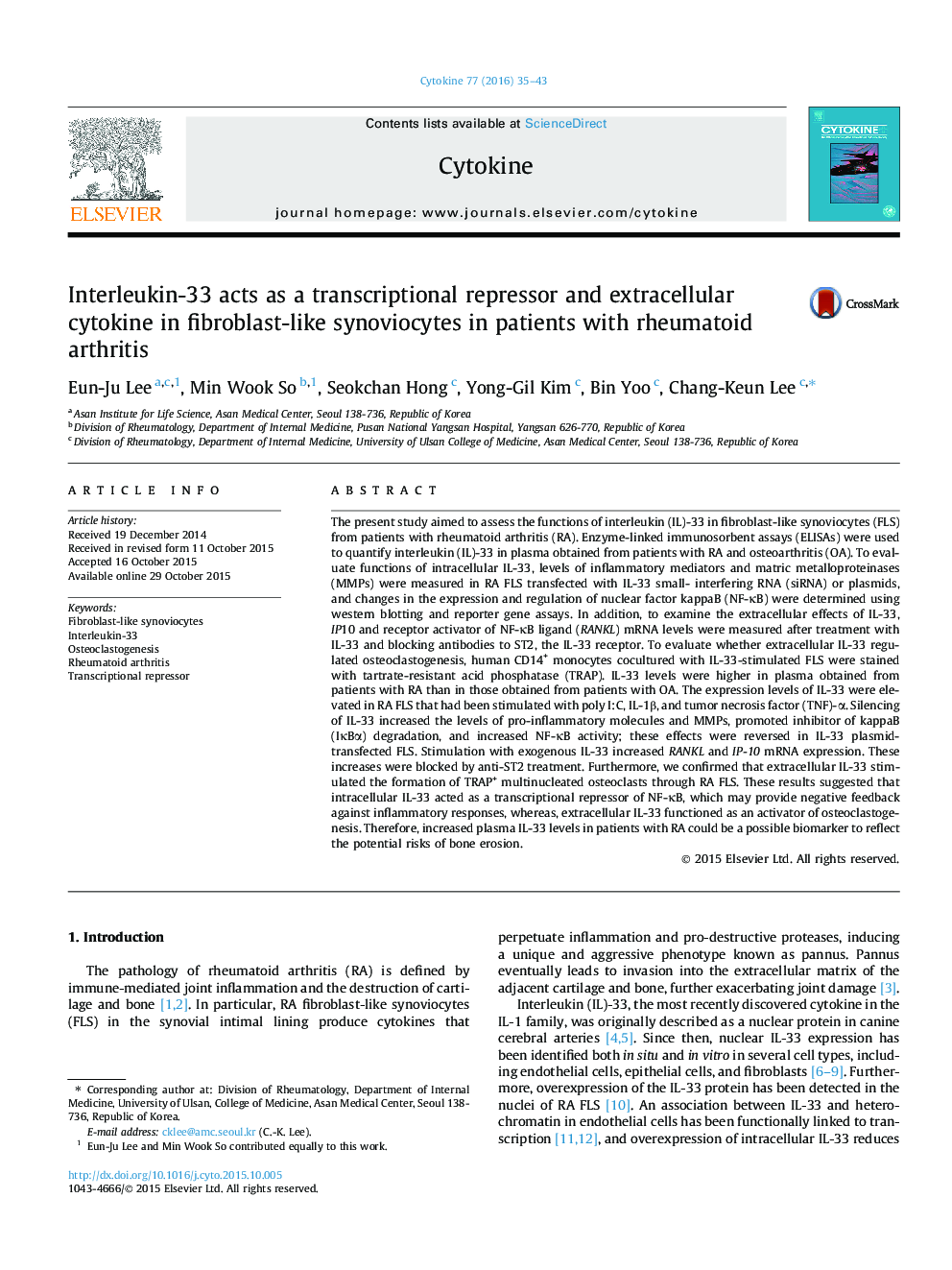| Article ID | Journal | Published Year | Pages | File Type |
|---|---|---|---|---|
| 5896771 | Cytokine | 2016 | 9 Pages |
â¢The levels of the IL-33 was elevated in RA FLS stimulated with poly I:C, IL-1β, and TNF-α.â¢IL-33 was elevated as negative feedback against inflammatory responses in RA FLS.â¢The increased RANKL in IL-33-stimulated FLS affects the OC differentiation.â¢Plasma IL-33 level in RA patients could be a possible biomarker to reflect potential risks of bone erosion.
The present study aimed to assess the functions of interleukin (IL)-33 in fibroblast-like synoviocytes (FLS) from patients with rheumatoid arthritis (RA). Enzyme-linked immunosorbent assays (ELISAs) were used to quantify interleukin (IL)-33 in plasma obtained from patients with RA and osteoarthritis (OA). To evaluate functions of intracellular IL-33, levels of inflammatory mediators and matric metalloproteinases (MMPs) were measured in RA FLS transfected with IL-33 small- interfering RNA (siRNA) or plasmids, and changes in the expression and regulation of nuclear factor kappaB (NF-κB) were determined using western blotting and reporter gene assays. In addition, to examine the extracellular effects of IL-33, IP10 and receptor activator of NF-κB ligand (RANKL) mRNA levels were measured after treatment with IL-33 and blocking antibodies to ST2, the IL-33 receptor. To evaluate whether extracellular IL-33 regulated osteoclastogenesis, human CD14+ monocytes cocultured with IL-33-stimulated FLS were stained with tartrate-resistant acid phosphatase (TRAP). IL-33 levels were higher in plasma obtained from patients with RA than in those obtained from patients with OA. The expression levels of IL-33 were elevated in RA FLS that had been stimulated with poly I:C, IL-1β, and tumor necrosis factor (TNF)-α. Silencing of IL-33 increased the levels of pro-inflammatory molecules and MMPs, promoted inhibitor of kappaB (IκBα) degradation, and increased NF-κB activity; these effects were reversed in IL-33 plasmid-transfected FLS. Stimulation with exogenous IL-33 increased RANKL and IP-10 mRNA expression. These increases were blocked by anti-ST2 treatment. Furthermore, we confirmed that extracellular IL-33 stimulated the formation of TRAP+ multinucleated osteoclasts through RA FLS. These results suggested that intracellular IL-33 acted as a transcriptional repressor of NF-κB, which may provide negative feedback against inflammatory responses, whereas, extracellular IL-33 functioned as an activator of osteoclastogenesis. Therefore, increased plasma IL-33 levels in patients with RA could be a possible biomarker to reflect the potential risks of bone erosion.
